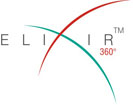:: ser-centered design
In broad terms, user-centered design (UCD) is a design philosophy and a process in which the needs, wants, and limitations of the end user of an interface or document are given extensive attention at each stage of the design process. User-centered design can be characterized as a multi-stage problem solving process that not only requires designers to analyze and foresee how users are likely to use an interface, but also to test the validity of their assumptions with regards to user behaviour in real world tests with actual users. Such testing is necessary as it is often very difficult for the designers of an interface to understand intuitively what a first-time user of their design experiences, and what each user's learning curve may look like.
The chief difference from other interface design philosophies is that user-centered design tries to optimize the user interface around how people can, want, or need to work, rather than forcing the users to change how they work to accommodate the software developers approach.
Models of a user centered design process help software designers to fulfill the goal of a product engineered for their users. In these models, user requirements are considered right from the beginning and included into the whole product cycle. Their major characteristics are the active participation of real users, as well as an iteration of design solutions.
- Cooperative design: involving designers and users on an equal footing. This is the Scandinavian tradition of design of IT artefacts and it has been evolving since 1970.
- Participatory design (PD), a North American term for the same concept, inspired by Cooperative Design, focusing on the participation of users. Since 1990, there has been a bi-annual Participatory Design Conference.
- Contextual design, “customer centered design” in the actual context, including some ideas from Participatory design
All these approaches follow the ISO standard Human-centered design processes for interactive systems (ISO 13407 Model, 1999).
Purpose
UCD answers questions about users and their tasks and goals, then use the findings to make decisions about development and design. UCD seeks to answer the following questions:
- Who are the users of the document?
- What are the users’ tasks and goals?
- What are the users’ experience levels with the document, and documents like it?
- What functions do the users need from the document?
- What information might the users need, and in what form do they need it?
- How do users think the document should work?

